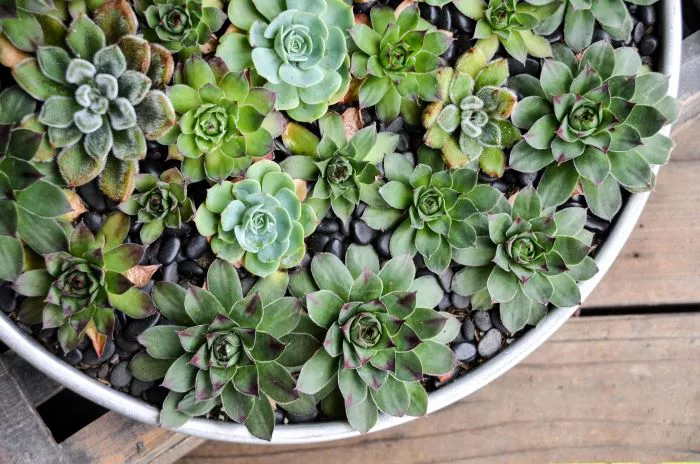Succulents are popular for their unique beauty and low maintenance needs. One of the keys to successfully growing healthy succulents is using the right soil mix. Succulent soil must provide excellent drainage, aeration, and the right nutrients. Making your own succulent soil mix allows you to customize the ingredients according to the specific needs of your plants. This article will guide you through the process of creating a suitable soil mix for succulents, the essential components, and tips for achieving the best results.
Understanding Succulent Soil Requirements
Succulents are adapted to thrive in arid environments. They require a soil mix that allows excess water to drain quickly while retaining some moisture for the roots. A well-draining mix prevents root rot, which is a common issue with succulents. Additionally, the soil should provide adequate aeration to support healthy root growth.
Essential Components of Succulent Soil Mix
To create an effective succulent soil mix, you need to combine several key components. Each component serves a specific purpose in promoting drainage, aeration, and nutrient retention.
Potting Soil: This is the base of your mix. Choose a high-quality potting soil that is lightweight and free from chemicals. Potting soil provides some nutrients and helps retain moisture.
Perlite: Perlite is a lightweight volcanic glass that enhances drainage and aeration. It prevents the soil from becoming compacted and allows air to reach the roots.
Sand: Coarse sand is another important component that improves drainage. It helps create a gritty texture that mimics the natural environment of succulents.
Pumice: Pumice is a volcanic rock that offers excellent drainage and aeration properties. It is lightweight and helps retain some moisture without becoming soggy.
Coconut Coir or Peat Moss: These materials can be added to improve moisture retention. Coconut coir is more sustainable than peat moss and provides good aeration as well.
Optional Additives: Depending on the specific needs of your succulents, you may choose to add other ingredients. These can include crushed granite, worm castings for additional nutrients, or charcoal to improve drainage and prevent odors.
Steps to Create Your Own Succulent Soil Mix
Creating your own succulent soil mix is a straightforward process. Follow these steps to ensure you achieve the right balance of ingredients.
Gather Your Materials: Collect all the necessary components. You will need potting soil, perlite, coarse sand, pumice, and any optional additives you wish to include.
Choose a Mixing Container: Use a large container or bucket to mix your ingredients. This will allow you to combine everything thoroughly.
Measure Your Ingredients: The ideal ratio for a basic succulent soil mix is typically 2 parts potting soil, 1 part perlite, and 1 part coarse sand or pumice. Adjust the ratios based on your specific needs. For example, if you are growing succulents that prefer drier conditions, you may want to increase the amount of perlite or sand.
Combine the Ingredients: Add the measured ingredients to your mixing container. Use a trowel or your hands to mix them thoroughly. Ensure that the components are evenly distributed.
Test the Texture: The final mix should feel light and gritty. It should crumble easily in your hands. If the mixture feels too dense or retains too much moisture, consider adding more perlite or sand.
Store or Use Immediately: Once your mix is ready, you can use it immediately for potting your succulents or store it in a sealed container for later use. If storing, keep it in a cool, dry place to prevent moisture buildup.
Tips for Using Your Succulent Soil Mix
Using your custom succulent soil mix effectively is crucial for the health of your plants. Here are some tips to keep in mind:
Choose the Right Pots: Ensure that you use pots with drainage holes. This will allow excess water to escape and prevent root rot.
Watering Practices: When watering your succulents, ensure that you allow the soil to dry out completely between waterings. This is essential for preventing overwatering.
Monitor Plant Health: Keep an eye on your succulents after potting them in your new soil mix. Look for signs of stress, such as yellowing leaves or stunted growth, which may indicate that adjustments are needed.
Adjust as Needed: If you find that your mix retains too much moisture or dries out too quickly, adjust the ratios of your ingredients in future batches. Experimenting will help you find the perfect balance for your specific environment and plant types.
Common Mistakes to Avoid
When creating your succulent soil mix, be aware of common mistakes that can affect plant health. Here are a few to avoid:
Using Regular Garden Soil: Regular garden soil is too dense for succulents and can lead to poor drainage. Always use a mix specifically designed for succulents.
Overwatering: Even with the right soil mix, overwatering is a common issue. Always allow the soil to dry out between waterings.
Neglecting Drainage: Ensure that your pots have adequate drainage. Without proper drainage, even the best soil mix can lead to root rot.
Ignoring Plant Needs: Different succulent species have varying needs. Research the specific requirements of your plants and adjust your soil mix accordingly.
Conclusion
Making your own succulent soil mix is a rewarding process that allows you to provide the best growing conditions for your plants. By understanding the essential components and following the steps outlined in this article, you can create a mix that promotes healthy growth and prevents common issues like root rot. With the right soil mix, your succulents will thrive, bringing beauty and joy to your home. Experiment with different ratios and ingredients to find the perfect blend for your specific succulents. Enjoy the journey of nurturing your plants and watching them flourish.


